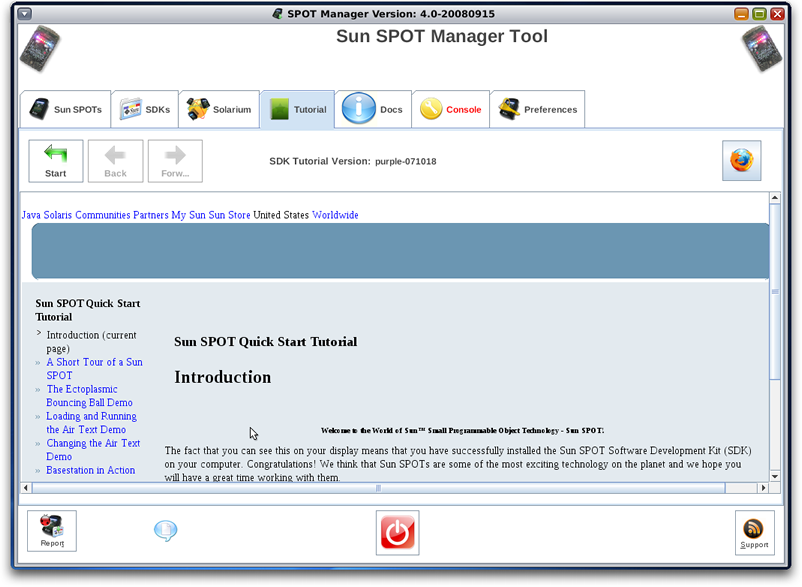Note: These instructions are thoroughly tested on Open Solaris 2008.05. While the Sun SPOT SDK may run on different versions of Solaris, this is the version on which we tested these installation instructions.
Important: We have identified problems using the Java Development Kit 1.6 (JDK 6) with Sun SPOTs on Solaris. In order to be able to communicate with your Sun SPOTs you must use Sun's JDK 5 (v1.5).
As stated previously, you must have at least a Sun Java Runtime Environment (JRE) installed to proceed. If you have that requirement satisfied, you can skip to Installing Using the Sun SPOT Manager section. Otherwise, proceed with installing the prerequisite software.
1. Installing Prerequisite Software
Chances are that you already have the necessary prerequisite software installed, but if you need to install the Sun Java Runtime Environment (JRE) then these instructions should help.
- Run the Package Manager to install the JRE:
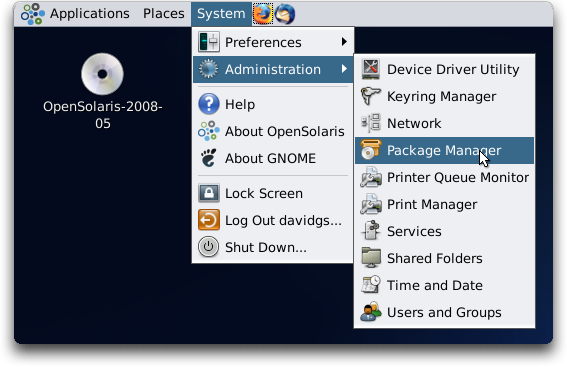
The Package Manager requires Administrator access, so you will be asked for your password before you can proceed. If you do not have Administrator rights on your machine, please ask a System Administrator to install a Sun JRE for you before proceeding.
A Sun Java Runtime Environment is a minimum requirement to be able to proceed.
- Find the Sun JRE Packages in the Package Manager:
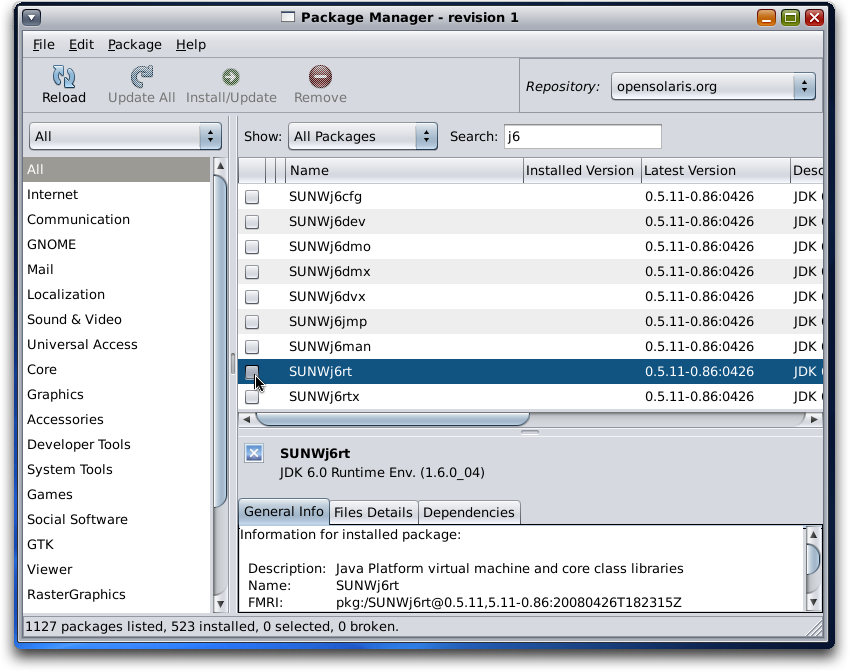
You will see several choices here. You must have at least the SUNWj6rt package installed at a minimum.
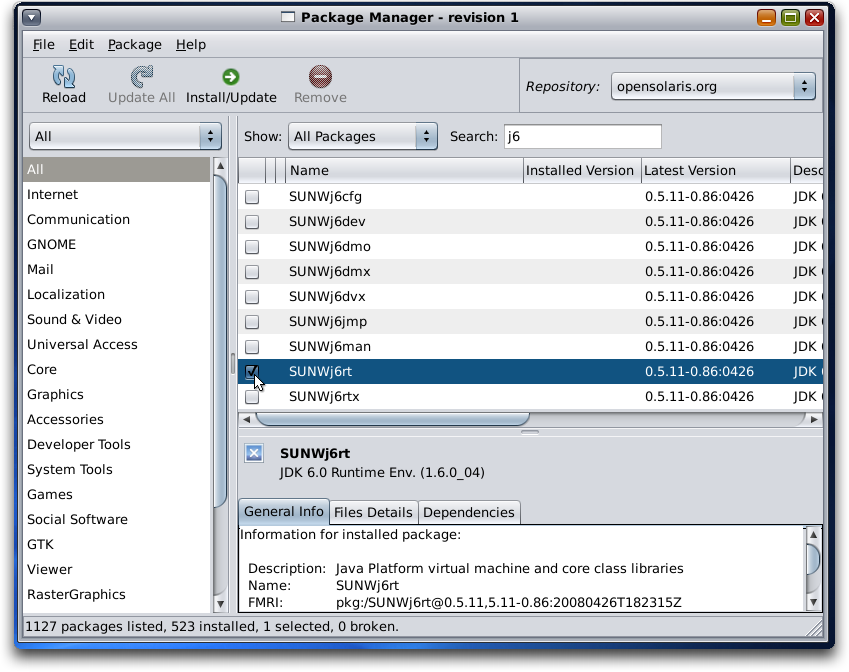
The Package Manager will determine if there are any unmet dependencies and select additional packages to be installed to meet them.
Of course, you can also install the Sun Java Development Kit (JDK) at this time as well, or allow the Sun SPOT Manager Tool to do it for you at a later time.
- Click Install/Update.
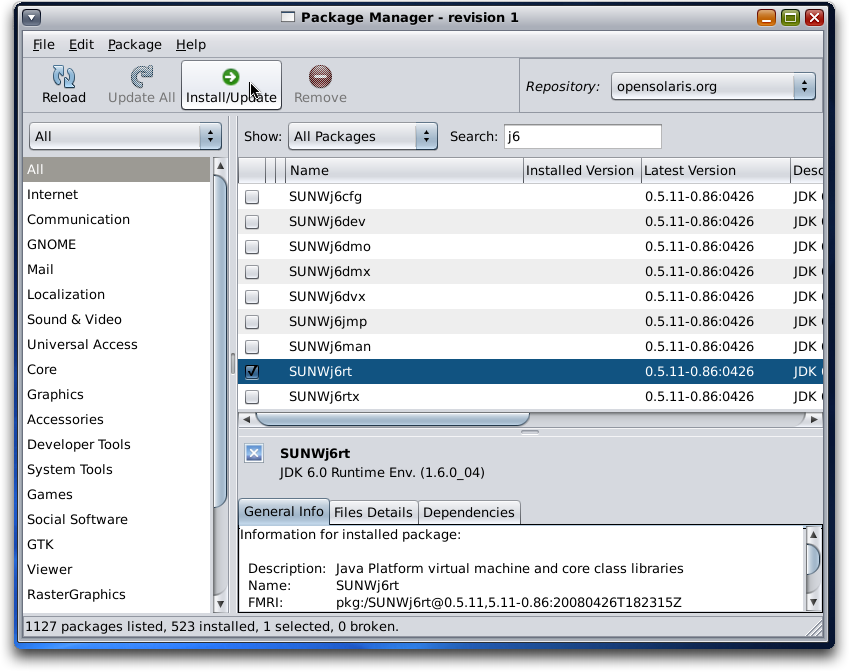
The Package Manager will ensure that all package dependencies are satisfied by adding additional packages to the install if necessary.
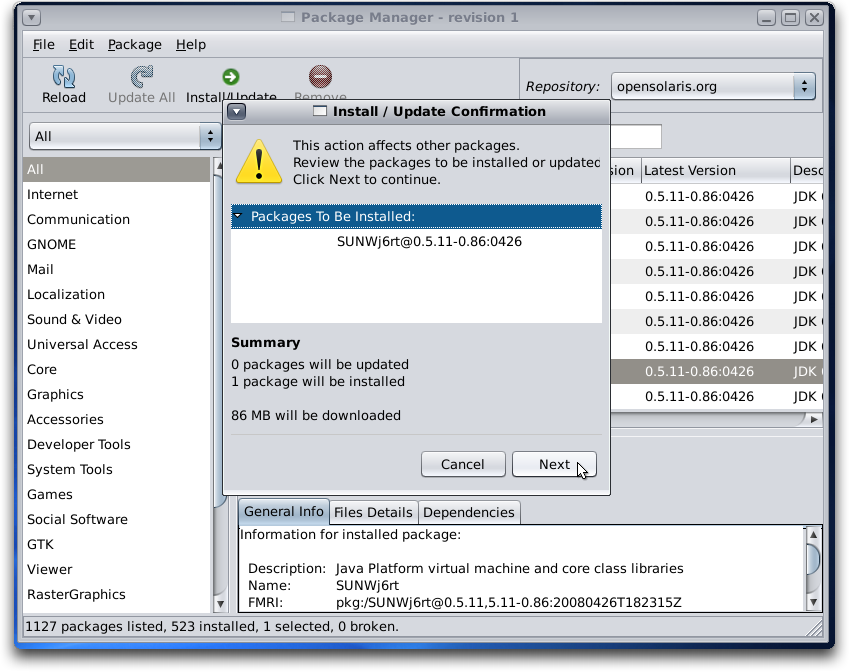
The Packages will be downloaded. And automatically installed and configured.
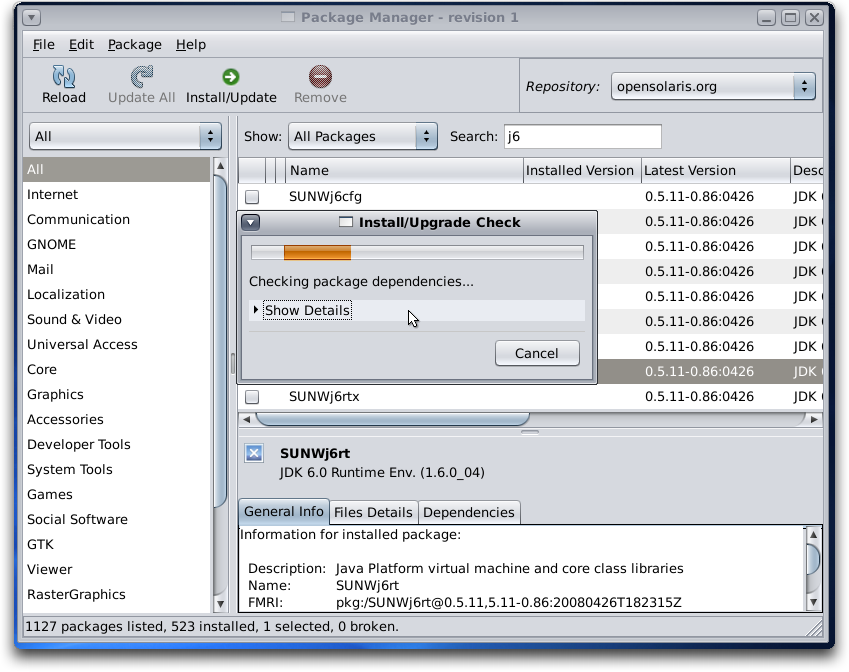
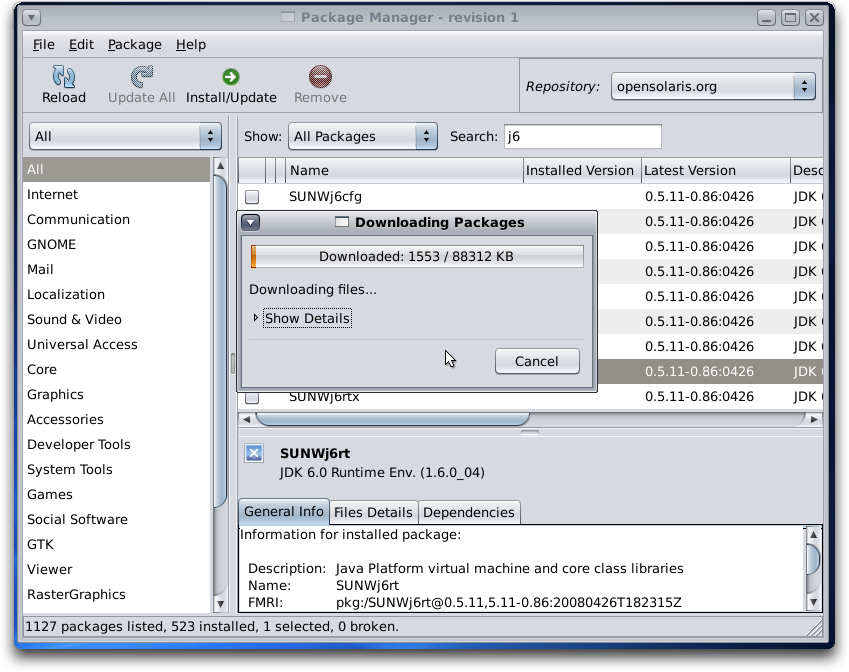
- That takes care of installing the prerequisite software. Everything else will be handled by the Sun SPOT Manager Tool.
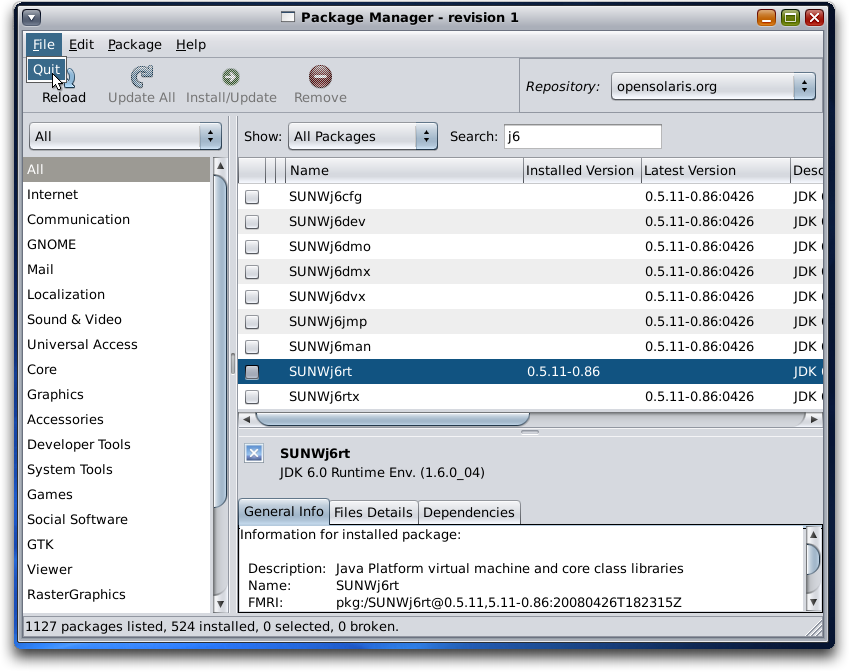
Quit the Package Manager.
2. Installation Using Sun SPOT Manager
The Sun SPOT Manager Tool is a Java WebStart Application, which means that you must have internet connectivity in order to run it for the first time (and to obtain updates in the future). It is designed to make installing and running the Sun SPOT SDK as easy as possible.
-
Navigate to the SPOT Manager web page
and click on the image of the Sun SPOT to launch the Sun SPOT Manager application.
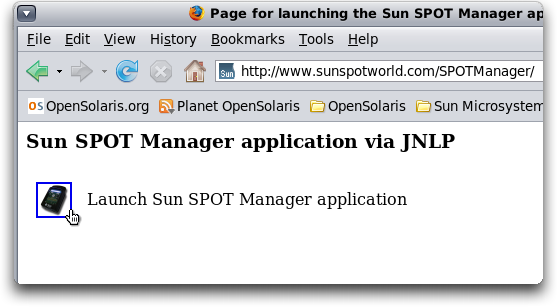
Clicking on the icon of the Sun SPOT on this page will download the Sun SPOT Manager Application to your machine and begin the installation process.
- You will see a series of windows appear as you go through this process:
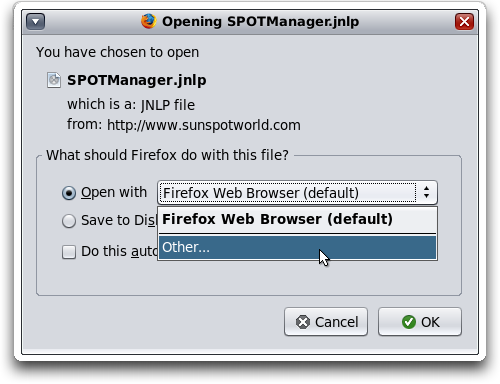
If your browser does not know how to deal with .jnlp files yet, configure it to open such files with the javaws application stored inside the folder containing the Java binaries. (If you used the installation instructions in the Prerequisites section to install java, your binaries will be stored in a subdirectory of /usr/java/ appropriate for the version of java which you installed).

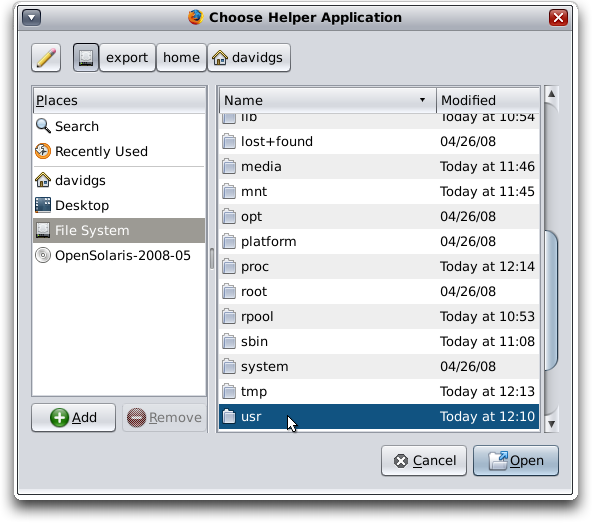
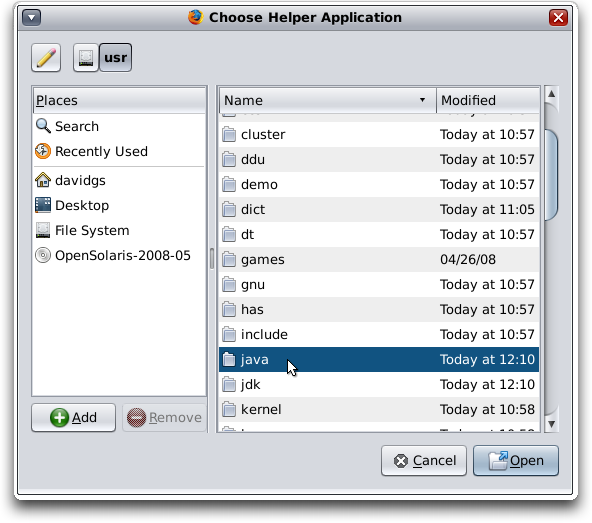
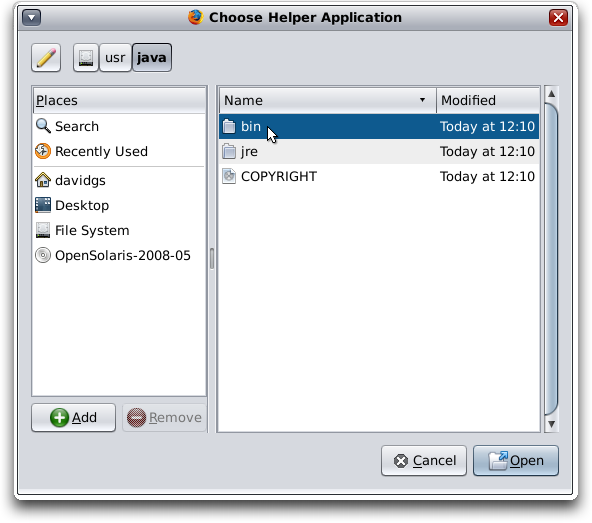
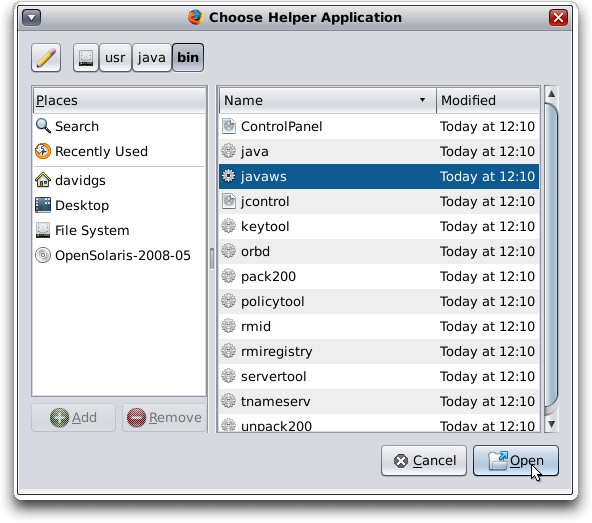
javaws is the Java WebStart application used for running Java WebStart Applications like the Sun SPOT Manager Tool.
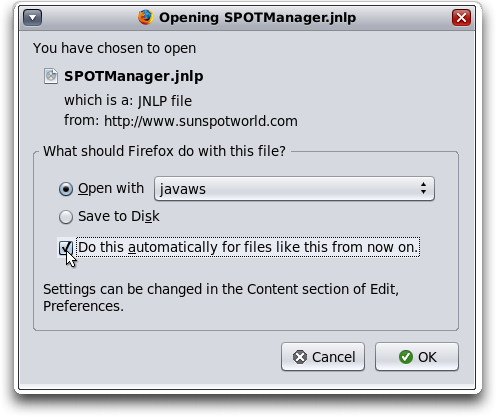
You can set your browser to always use javaws to open such files if you wish.
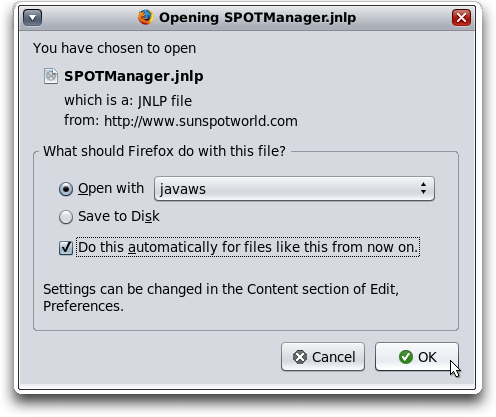
- Java WebStart will download all teh required parts of the application for you.
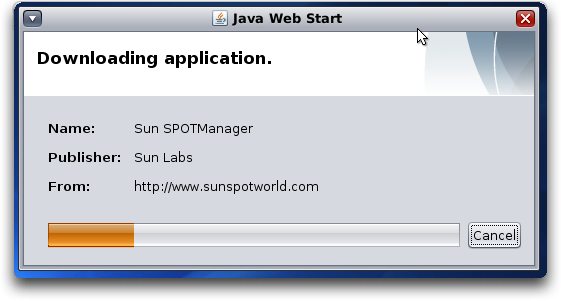
- You will be asked to accept the digital certificate of the Sun SPOT Manager Application.
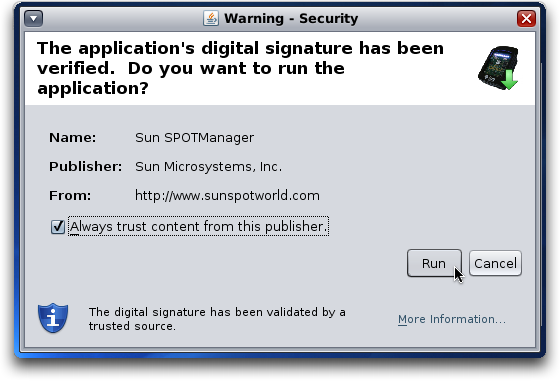
This is a trusted certificate, signed by Sun Microsystems, so accepting it permanently is safe.
- You may be prompted to configure a Desktop Shortcut for the Sun SPOT Manager. It is recommended that you do this in order to make using the Sun SPOT Manager easier in the future.
- Once downloaded, the Sun SPOT Configuration Validator will start. This utility will check for any missing required software, and will enable to you install and configure any and all required software.
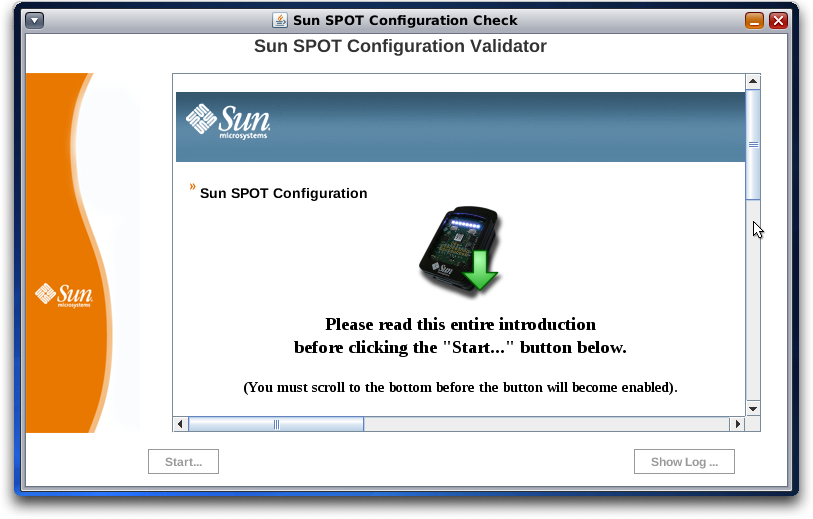
You must scroll to the bottom of the window in order to enable the 'Start ...' button. It is even suggested that you read the text in the window as you do so.
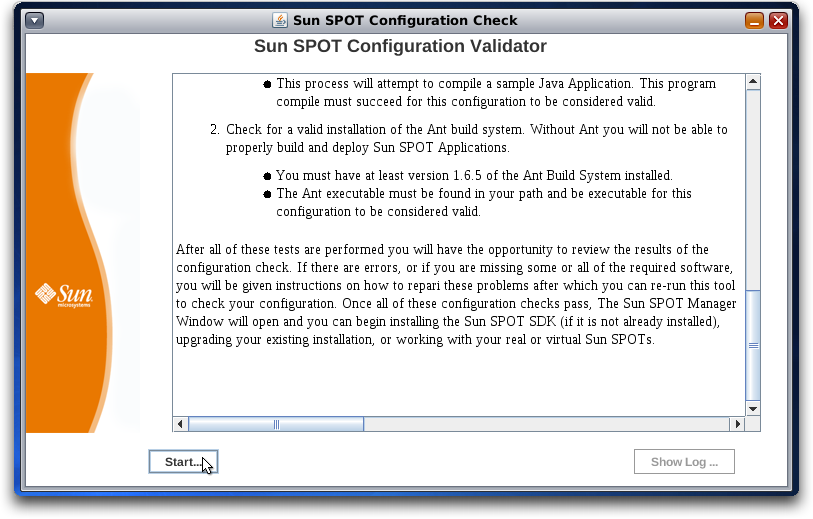
- If you did not install the Sun JDK in the Prerequisite section, The Sun SPOT Manager will offer to install it for you.
Note: If you do not have a JDK installed already, and you select 'No' at this point, your installation will not complete. If you already have a Sun JDK installed, skip to Step 9 and continue.
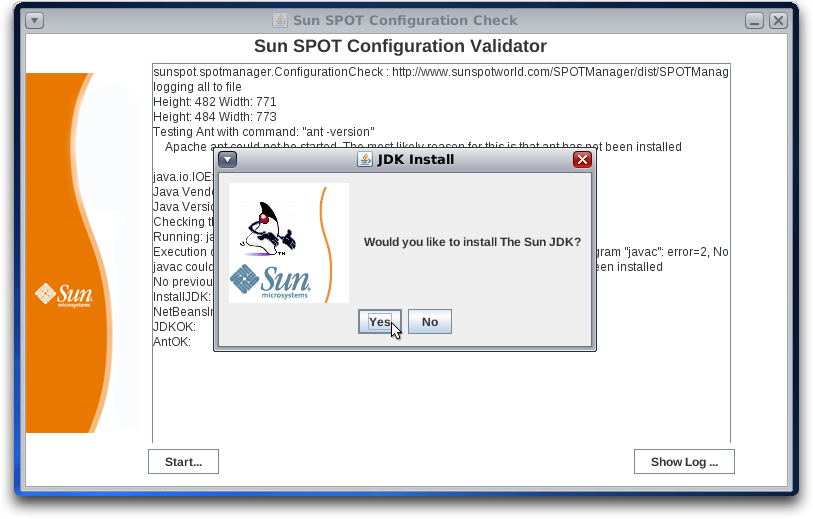
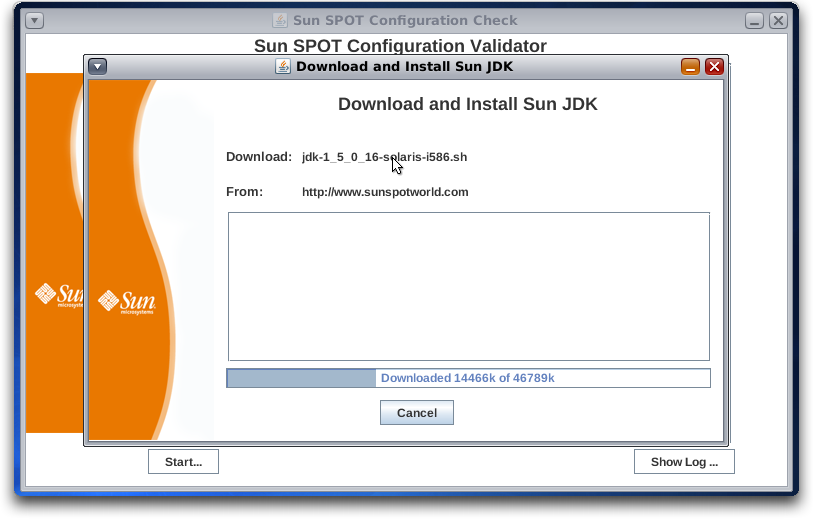
Note that JDK 5 is installed. This is important, as there are currently problems using JDK 6 and Sun SPOTs due to issues with the USB/Serial communications software.
- The Sun Java Development Kit installer will be downloaded and executed for you. You must scroll through the license agreement (use the space bar) and agree to it before proceeding.
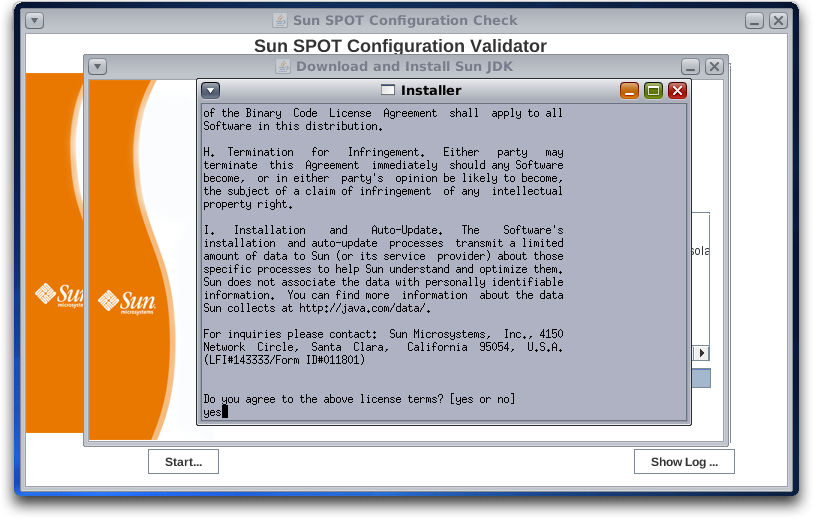
You must also type 'yes' to accept the license agreement.
You will see the entire output of the JDK Installation process.
Hit 'Enter' to complete the JDK Installtion processif prompted to do so.
Note: This process will install the JDK in your home directory. If you do not have Administrator Access to your machine, this is your option for installing software.
- You will then be given the opportunity to install the latest version of the NetBeans IDE (currently 6.1). While NetBeans is not a requirement for Sun SPOT development, we highly recommend installing NetBeans and the Sun SPOT NetBeans modules as we have provided templates for developing Sun SPOT applications (both host-side and SPOT-side applications) using NetBeans.
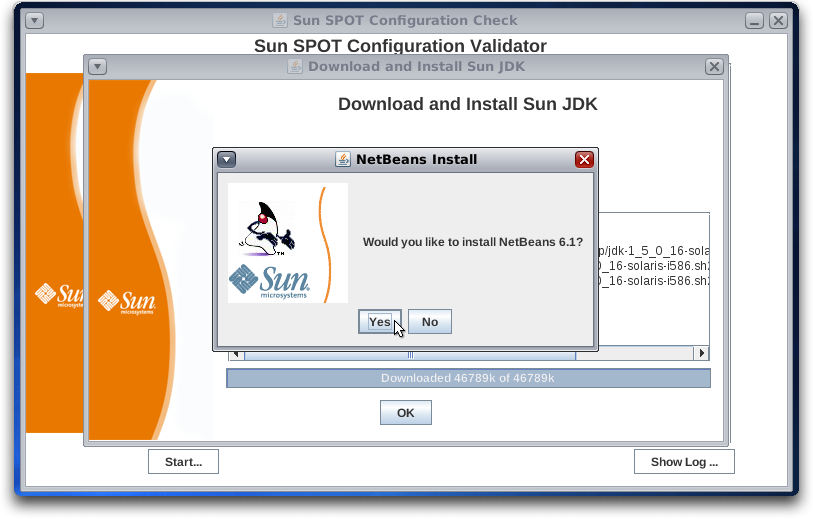
- NetBeans is downloaded from the NetBeans Download Center.
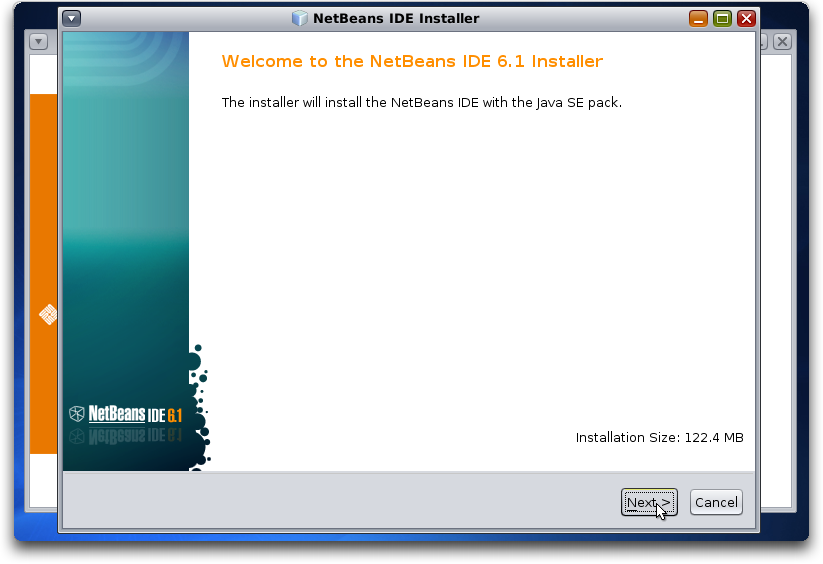
Once downloaded, the NetBeans installer will begin. This will walk you through the entire process of installing NetBeans.
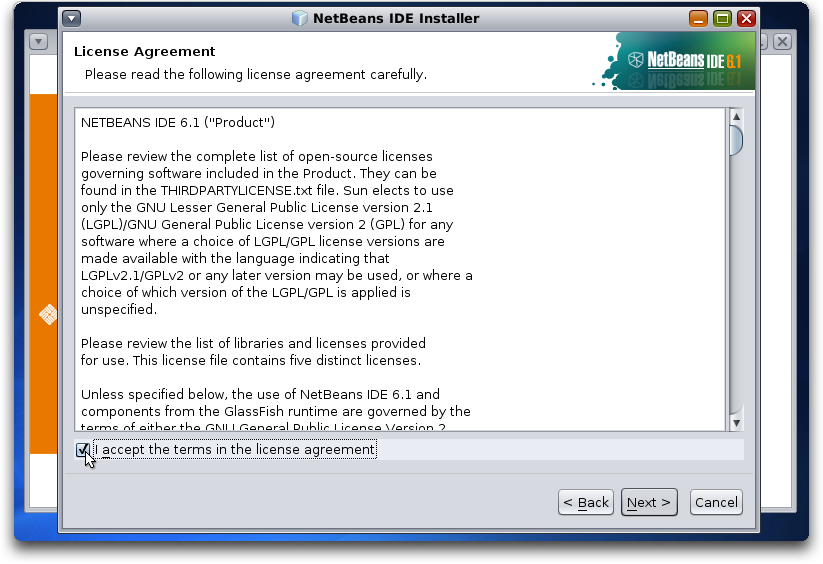
You must agree to the NetBeans license.
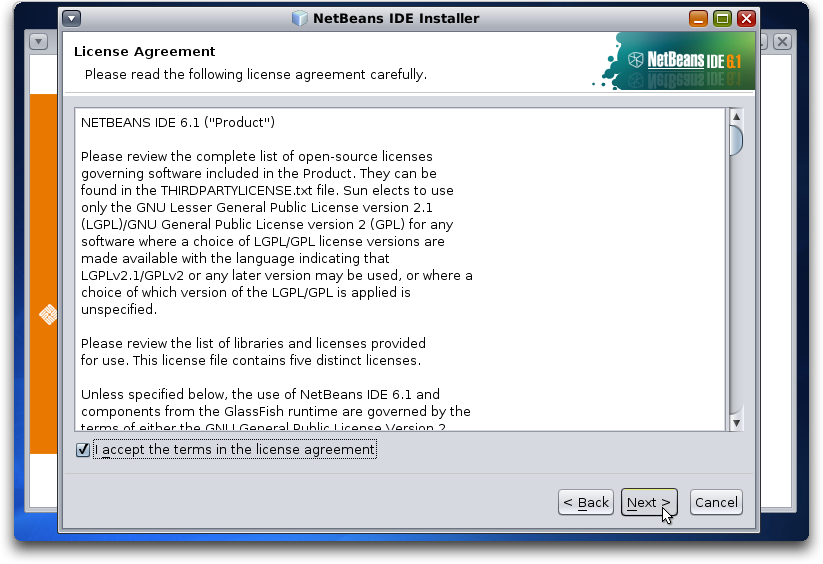
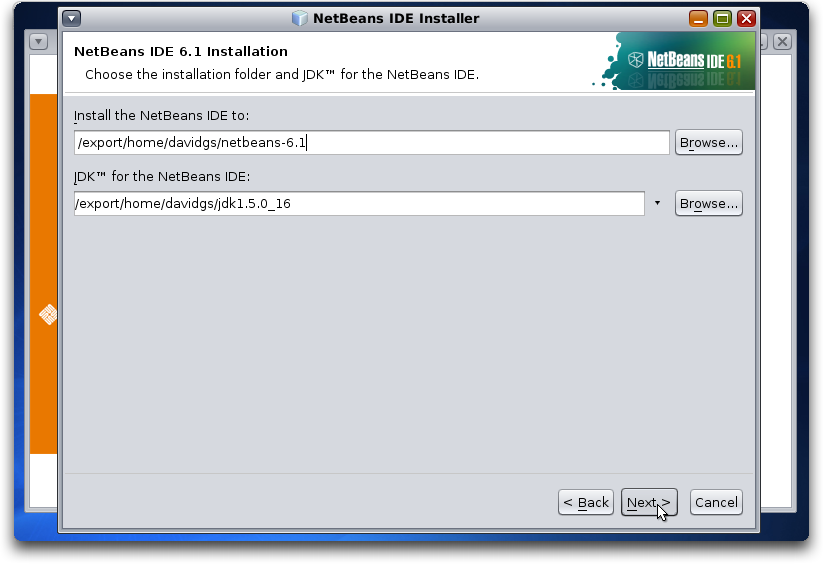
You should be able to accept the default values for everything:
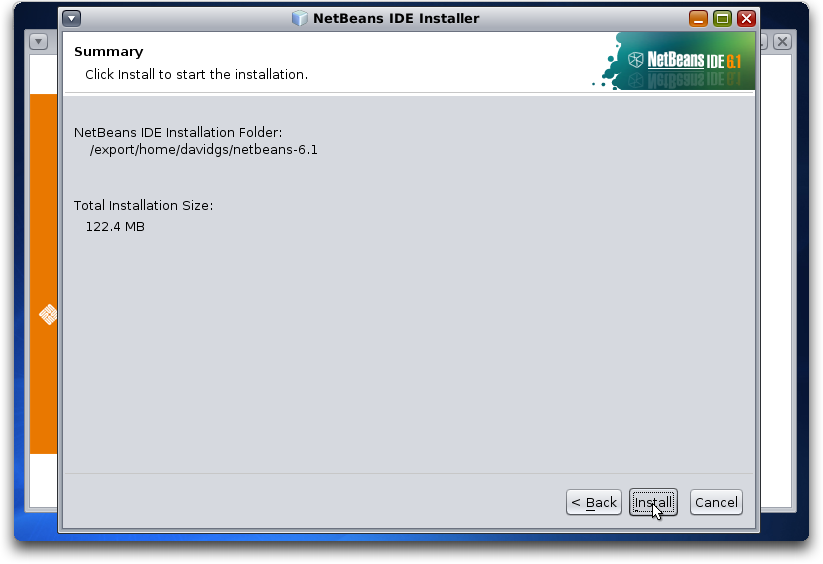
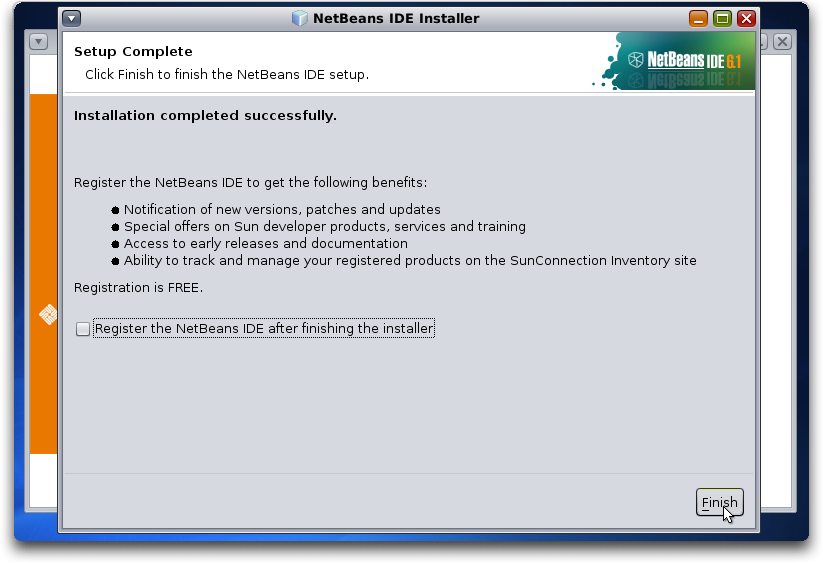
- Once NetBeans is completely installed, if the Apache Ant Build environment is not already installed on your machine, the Sun SPOT Manager will offer to install it for you. Once again, this is required software, and you must either allow the Sun SPOT Manager to install ant, or install ant via the Package Manager or some other mechanism before the installation of the Sun SPOT SDK will succeed.
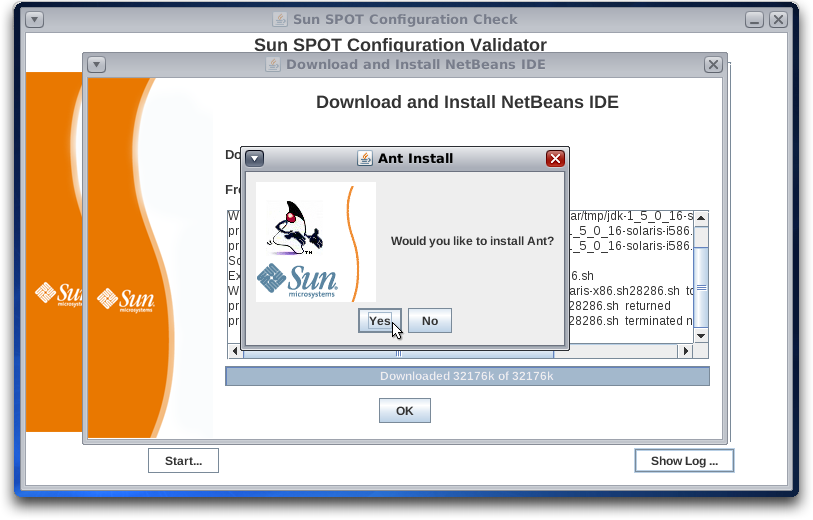
Ant will be downloaded from one of the official Apache mirrors and installed.
- Once the installation of Ant has completed you will be given the opportunity to install the Sun SPOT NetBeans modules. Again, we strongly recommend installing the Sun SPOT NetBeans modules as they greatly simplify the development of Sun SPOT Applications.
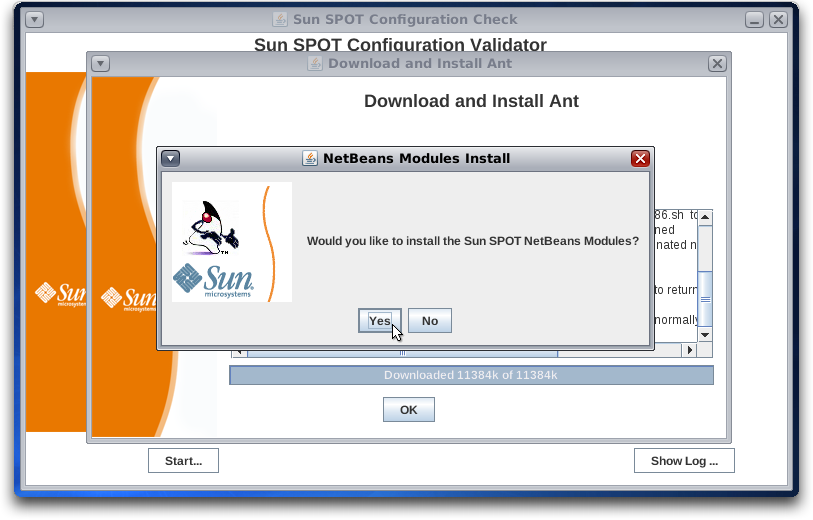
- It is now time to install the SUn SPOT SDK Software. You will be presented with the Sun SPOT SDK License Agreement.
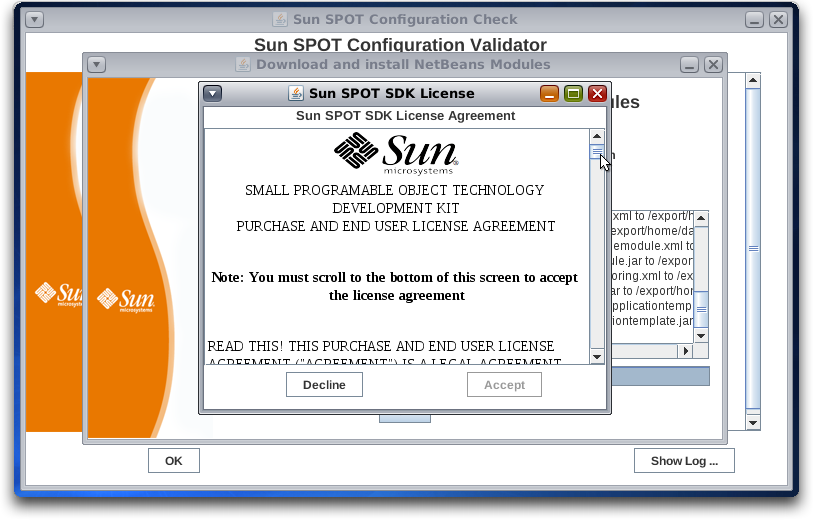
You must accept this license agreement in order to proceed with the installation.
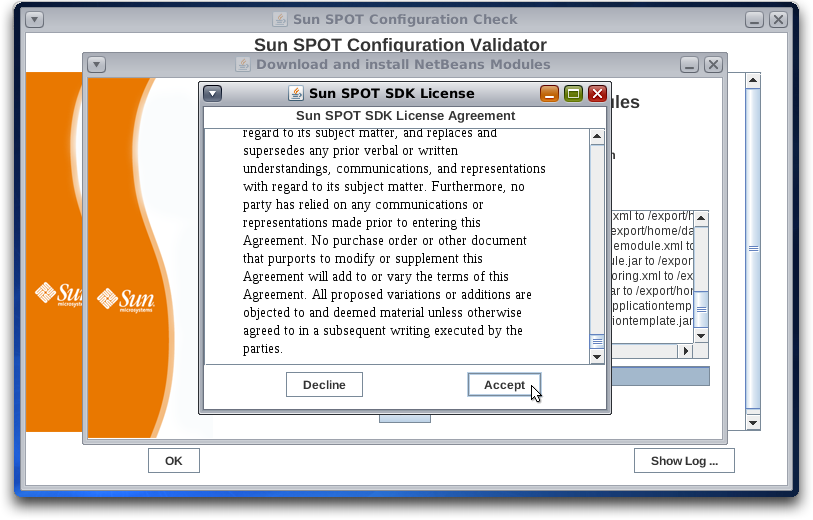
Note that, once again, you must scroll to the bottom of the license agreement before you will be able to click the 'Accept' button. Also, you are strongly encouraged to read the license agreement before agreeing to it.
- You can simply accept the default values, unless you have reason to want your development environment located somewhere else.
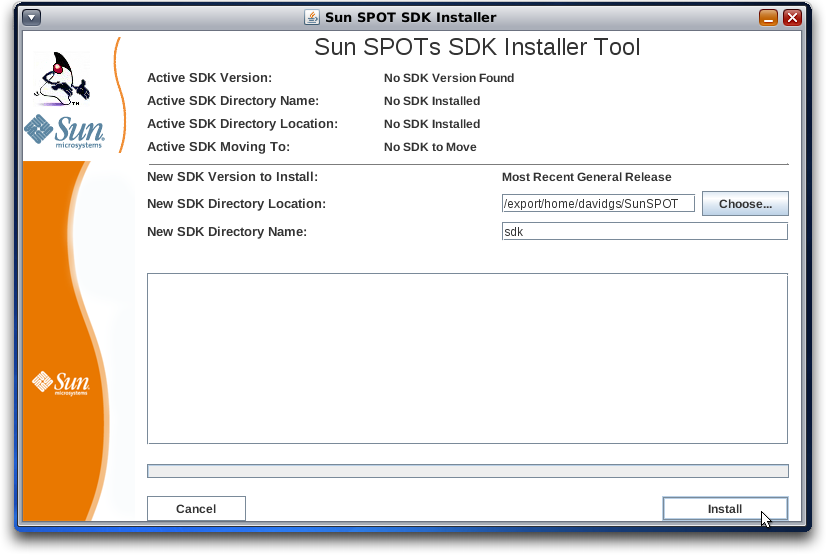
- Once the Sun SPOT SDK has completed downloading and installing, you should see the following screen which indicates that the process has been successful.

Click the 'Done' button to complete the installation process.
- You should now see the following screen, indicating success.
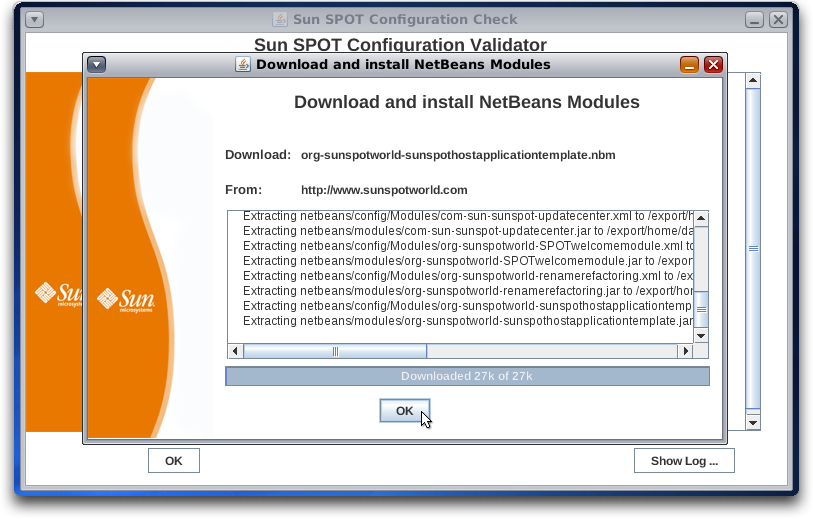
- You can see the specifics of what was done by clicking the "Show Log" button.
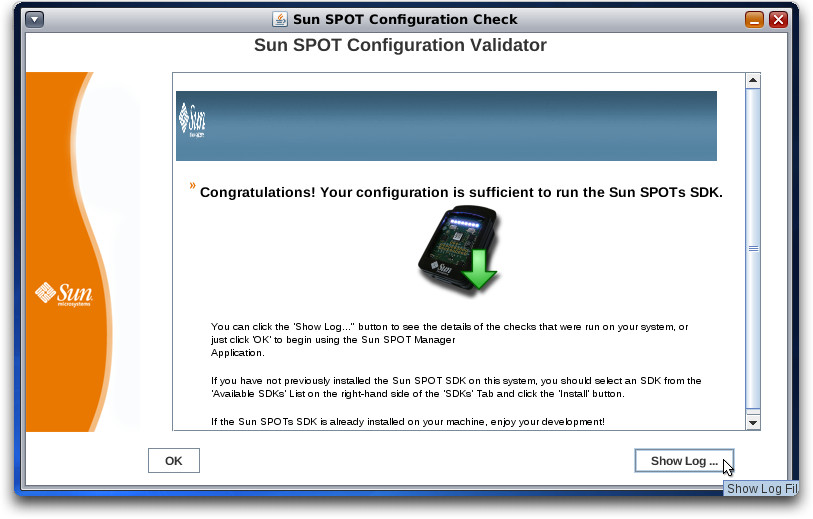
If you have had difficulties, or if things did not work as you expected, click the "Show Log" button, copy the entire log output, and post it to the Sun SPOT Support Forums under the 'SPOT Manager' area. Otherwise, click 'OK' to end the installation.
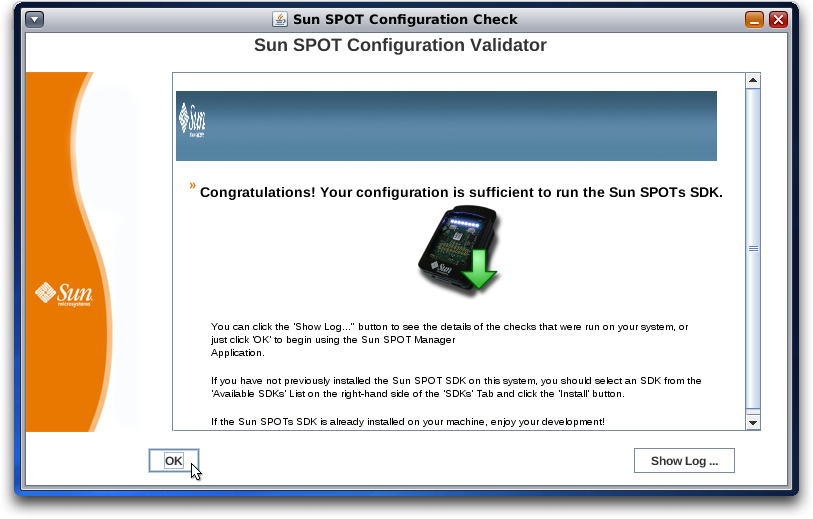
- Finally, if you installed either the Sun JDK or Ant (or both) you will see the following screen.
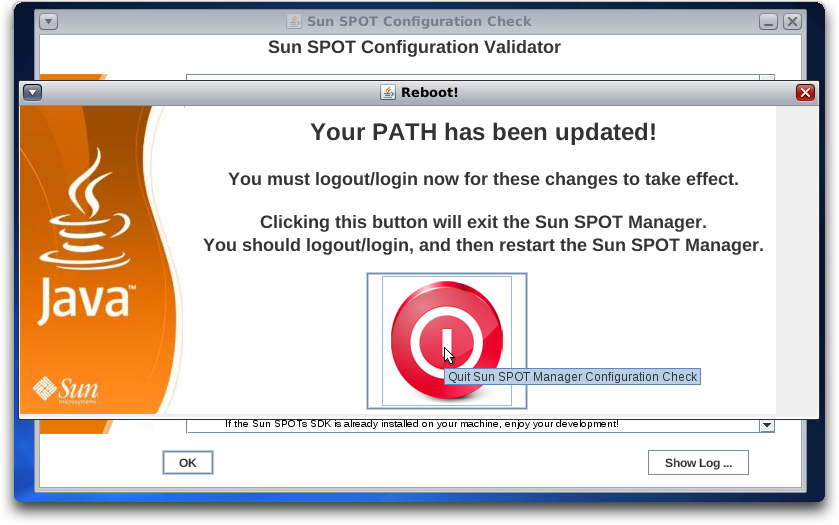
You must logoff/login in order to complete the installation process.
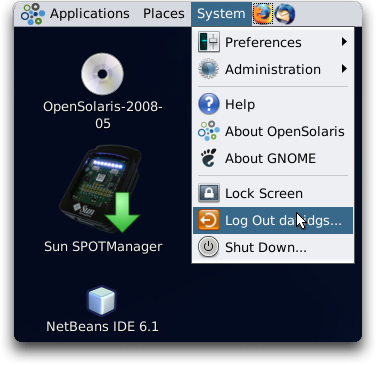
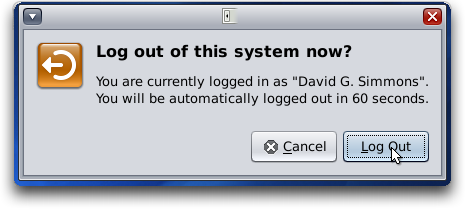
- Upon logging in again, you should run the Sun SPOT Manager Tool. Once again, you will go through the Configuration Validation process, but you should be left at the screen shown in step 18. Clicking 'OK' will take you directly to the main Sun SPOT Manager window
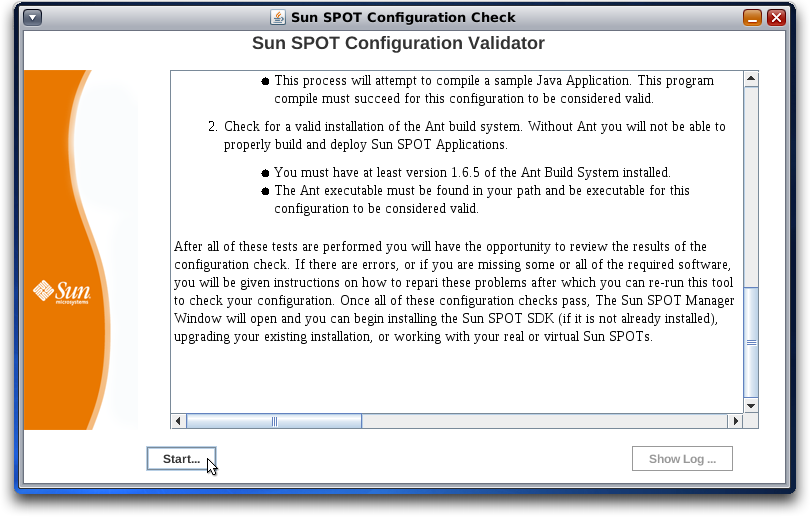
- Of course, this time everything should work fine, and you should see the success screen.
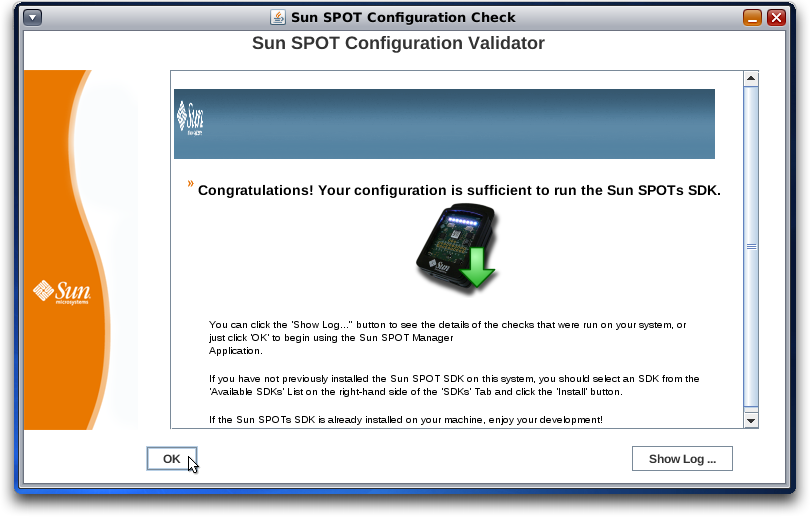
Clicking 'OK' will now take you to the Sun SPOT Manager Tool's Tutorial Window.
- We suggest that you work through the Tutorial to better understand your Sun SPOT SDK Software and Hardware.
